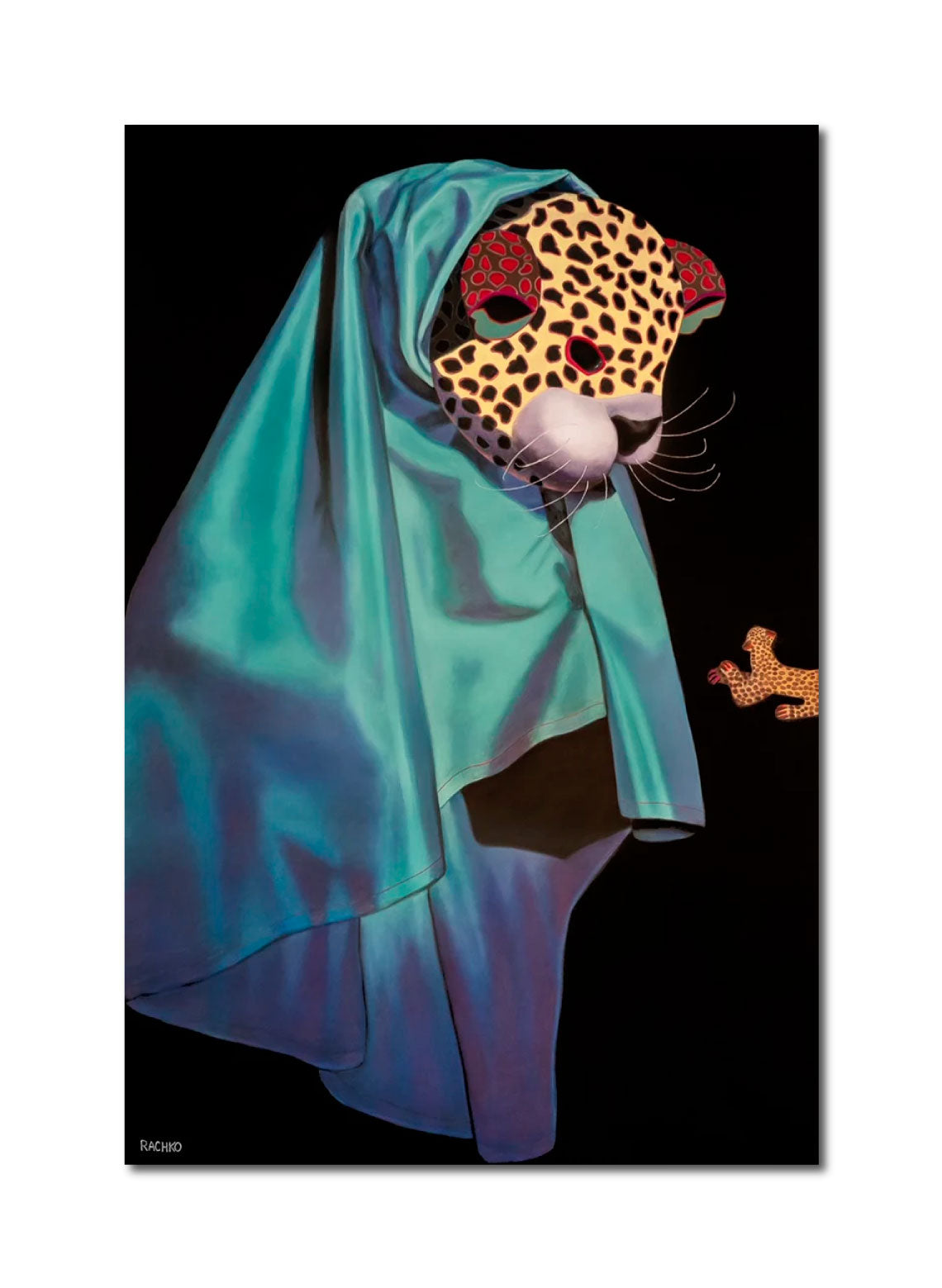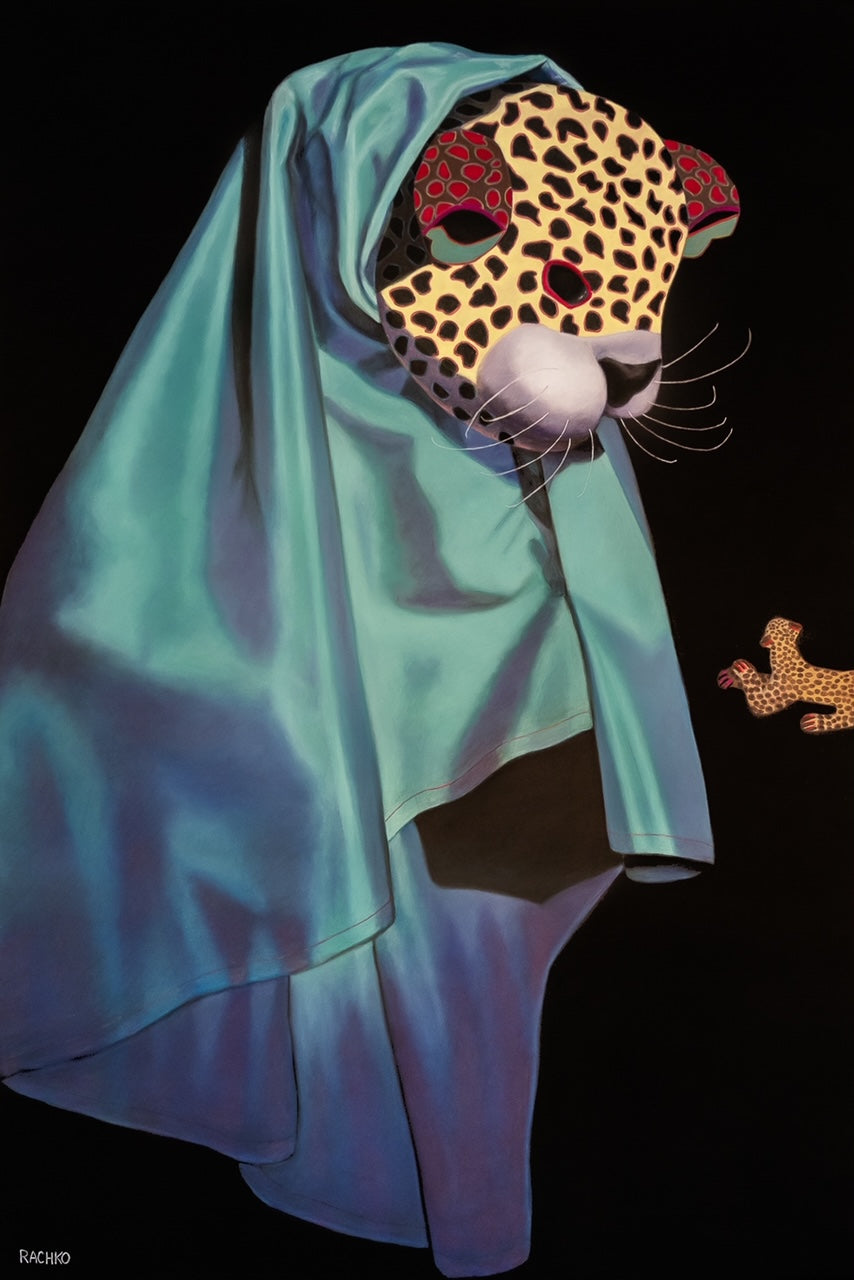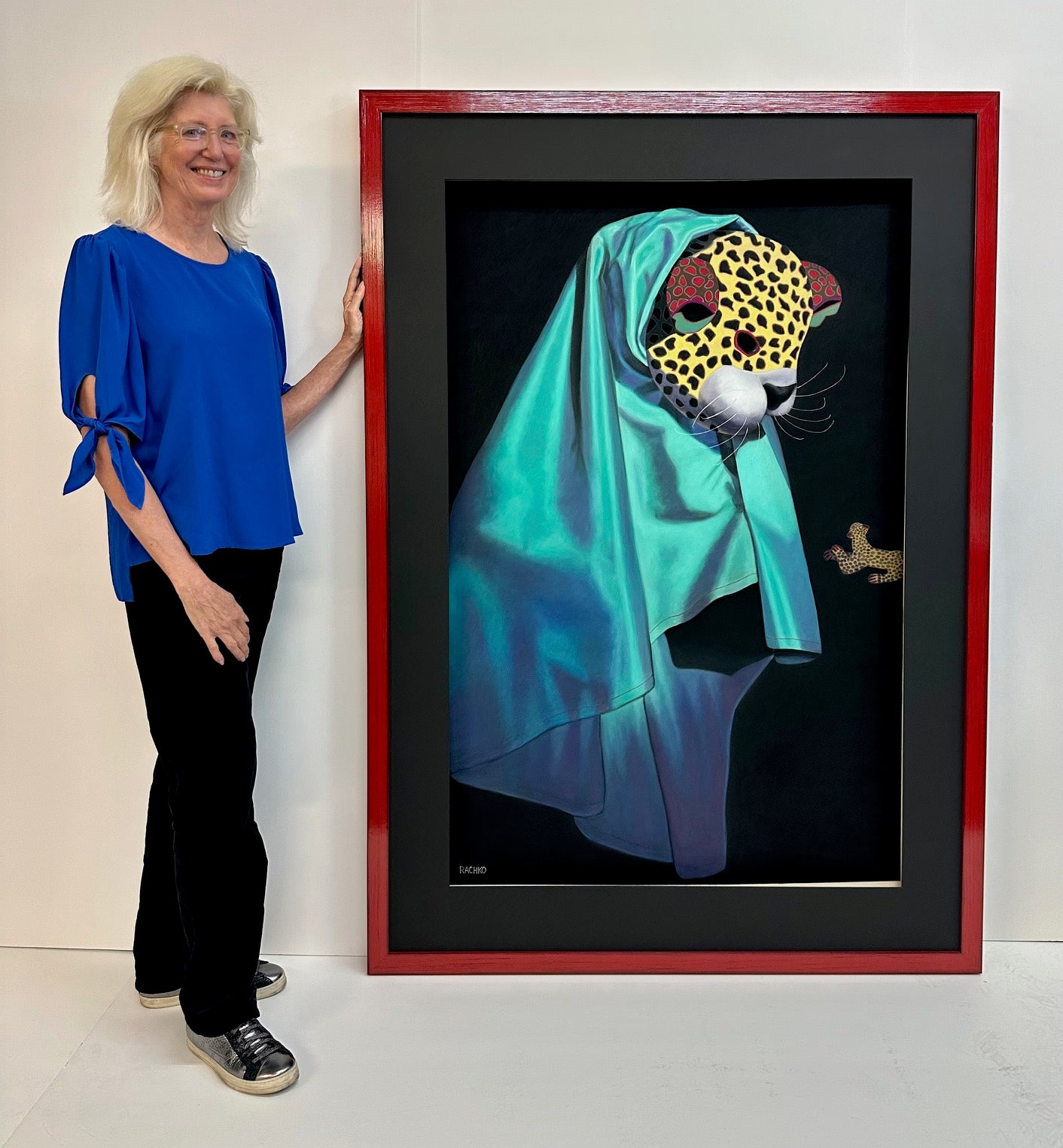

"WISE ONE - BOLIVIANOS" Soft Pastel on Sandpaper
Dimension: 58" x 38"
Framed: 70" x 50"
Certification of Authenticity: Apricus Art Collection
Signature: Signed by Artist
Bolivianos
In reality the festive masks made of stucco or cloth which the dancers wear to cover their psychological masks of submission, indifference and self-inflicted censure, permit them to show their true faces. By virtue of this paradoxical covering to uncover, all the unconfessed desires, the repressed energies and the hidden resentments overflow in a torrent of color, movement and melody: a magnificent awakening of a sleeping culture.
Masks of the Bolivian Andes, Editorial Equipus and Banco Mercantil
My long-standing fascination with traditional masks took a leap forward in the spring of 2017 when I visited the National Museum of Ethnography and Folklore in La Paz, Bolivia. One particular exhibition on view, with more than fifty festival masks, was completely spell-binding.
The masks were old and had been crafted in Oruro, a former tin-mining center about 140 miles south of La Paz on the cold Altiplano (elevation 12,000’). Depicting important figures from Bolivian folklore traditions, the masks were created for use in Carnival celebrations that happen each year in late February or early March.
Carnival in Oruro revolves around three great dances. The dance of “The Incas” records the conquest and death of Atahualpa, the Inca emperor when the Spanish arrived in 1532. “The Morenada” dance was once assumed to represent black slaves who worked in the mines, but the truth is more complicated (and uncertain) since only mitayo Indians were permitted to do this work. The dance of “The Diablada” depicts Saint Michael fighting against Lucifer and the seven deadly sins. The latter were originally disguised in seven different masks derived from medieval Christian symbols and mostly devoid of pre-Columbian elements (except for totemic animals that became attached to Christianity after the Conquest). Typically, in these dances the cock represents Pride, the dog Envy, the pig Greed, the female devil Lust, etc.
The exhibition in La Paz was stunning and dramatic. Each mask was meticulously installed against a dark black wall and strategically spotlighted so that it became alive. The whole effect was uncanny. The masks looked like 3D versions of my “Black Paintings,” a pastel paintings series I have been creating for ten years. This experience was a gift… I could hardly believe my good fortune!
Knowing I was looking at the birth of a new series – I said as much to my companions as I remained behind while they explored other parts of the museum – I spent considerable time composing photographs. Consequently, I have enough reference material to create new pastel paintings in the studio for several years. The series, entitled “Bolivianos,” is arguably my strongest and most striking work to date.
Choose options



BIOGRAPHY
Barbara Rachko is an American contemporary artist and author who divides her time between New York City and Alexandria, VA. Best known for her one-of-a-kind pastel-on-sandpaper paintings, Barbara draws from her vast collection of Mexican and Guatemalan folk art—including masks, carved wooden animals, papier-mâché figures, and toys—to create bold and surreal works that blend fantasy with personal narrative.
Her career has been as vibrant as her art. At 25, Barbara learned to fly, became a commercial pilot and Boeing-727 flight engineer, and later served as a Naval officer at the Pentagon, eventually retiring as a Commander. Her personal journey is marked by tragedy—on 9/11, her husband, Dr. Bryan C. Jack, was killed on the plane that hit the Pentagon—yet she continues to transform life into powerful visual expression.

Barbara is the author of “From Pilot to Painter” and the creator of the acclaimed blog “Barbara Rachko’s Colored Dust,” now read by over 213,000 subscribers. Her Facebook community has surpassed 182,000 followers, and she is frequently featured in exhibitions and interviews, including Franki’s Open Mike and The Healing Power of Color 2025.
New York critic Peter Dellolio writes, “Like de Chirico, Barbara Rachko has created a unique, original, and very private landscape.” Arts writer Ann Landi notes her visual strategy evokes “the sophisticated patterning of Matisse and the oblique angles of Degas.”
Barbara exhibits both nationally and internationally and is currently represented by Vedica Art Studios and Gallery (IN), Apricus Art Collection (US), and others.



